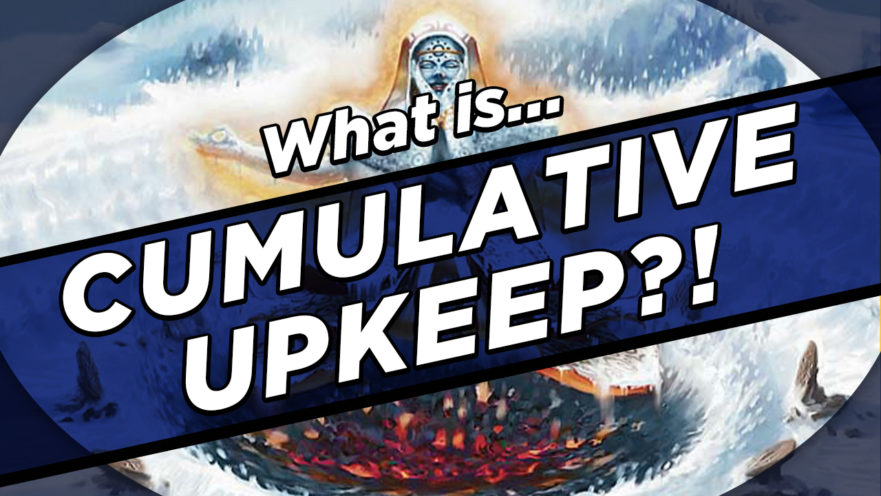Magic: The Gathering has been around for a long time, and as you wade through the archives of older cards, there are bound to be some keywords that give you pause. Whether these keywords are completely new to you or you need a refresher, we’re here to help!
Today, we’re here to explain a mechanic from way back in Ice Age: cumulative upkeep. While it has a reputation as one of Magic‘s more daunting mechanics, it turns out to be much simpler than it looks. Let’s check it out!
What is Cumulative Upkeep?
The term “cumulative upkeep” itself gives us a pretty good idea of how this mechanic works. Permanents with this mechanic accumulate age counters every turn on your upkeep, and the cost of keeping those cards on the battlefield increases along with the number of counters. So, if a permanent has three age counters on it, you’ll have to pay three mana on your upkeep. If the cost gets too steep — or if you decide not to pay the cost for any reason — you’ll have to sacrifice the permanent.
If a card has multiple instances of cumulative upkeep, they’ll each trigger separately — but the age counters associated with each ability aren’t separated at all. Each ability only cares about the total number of age counters on the permanent, so multiple cumulative upkeeps just speed up the clock on how much you have to pay.
You also can’t pay any partial costs to satisfy the requirement for cumulative upkeep. Paying less than the full amount is functionally the same as not paying at all.
Cumulative upkeep was designed to to serve as a downside, to balance out otherwise powerful cards. But as time as gone on and more Magic cards have been printed, there are plenty of ways to remove or make use of age counters. If you’re looking to build a unique deck, consider using cards with this mechanic!

